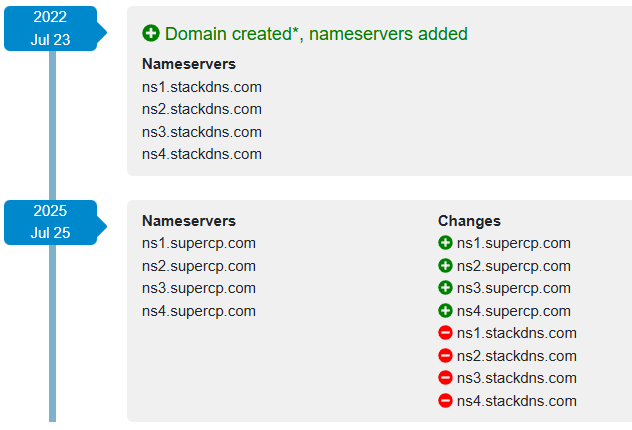TL;DR:
-
New website? Tell your IT team before the switch.
-
Web hosting changes often move the nameserver.
-
Copying DNS records manually risks missing vital email security settings.
-
Missed DKIM/DMARC means your domain reputation tanks, and you lose mail.
-
Managed IT = peace of mind and continuity.
If I had a pound for every time someone said that, I’d have enough to buy a round for everyone still waiting for a missing email to turn up.
So here’s the story.
Someone messaged us in November, saying some of their clients were getting bounce-backs when they tried to email them. They are missing messages, and that’s disastrous for business, especially when you don’t even realise what you’re not receiving.
Now, usually when we hear “email issue,” it’s a problem on the sender’s side, not the receiver’s. But when you’re one of our clients, we don’t take chances. We check it all, so you can’t be blamed for someone else’s mistake.
Step 1: Something looked off
When we tested the setup, we saw a relay error from an MX record we didn’t recognise.mail.domain.co.uk odd. That’s not one of Microsoft 365’s mail servers.

The MX record list showed three entries, all with the same priority 0. That’s like telling the postman to deliver the same letter to three different houses at once. Two were valid Microsoft records, and one belonged to a completely different web server.
That’s not how we leave things.
Step 2: Follow the breadcrumbs
Next, we checked the nameservers, the phonebook of the internet that tells the world where your settings live.
And there it was: they’d been switched in July.

We asked the client, “Have you had a new website recently?”
“Oh yes,” she said. “But I didn’t tell you, it’s just a web page, nothing to do with my emails.”
And there’s the problem.
Step 3: Web designers vs IT — different galaxies
Web developers are brilliant at design and site deployment, they make things look fantastic and function beautifully online and will bring you in propsects.
But DNS and email routing? That’s not their world. It’s like asking a Michelin-star chef to service your car engine because both involve timing.
When the new website was launched, the web team changed the nameserver to their hosting platform. They even copied a few DNS records across, the ones they recognised, but they missed the critical bits:
-
❌ Left an old MX record pointing to the wrong place
-
❌ Didn’t carry over the DKIM record (email signing)
-
❌ Didn’t bring the DMARC policy (email reputation control)

Result?
Her email reputation nosedived. Every legitimate email she sends or receives is a gamble. Some reach the inbox, others vanish into spam purgatory, and a few bounce straight back.
And the worst part?
It’s been happening intermittently for four months before anyone realised.
Step 4: The bigger picture
This isn’t a one-off.
It’s the second case in 7 days where a website relaunch quietly broke the email system completely for 3 days on a NameServer move.
Domains are like the plumbing of the internet, everything’s connected behind the scenes. You can’t just swap the kitchen sink without warning the plumber.
Step 5: The simple fix (and the smarter one)
Always include your IT department when you make website or hosting changes.
We can coordinate the DNS, double-check the records, and stop this kind of chaos before it starts.
Or better yet, let your IT department manage the domain entirely.
That way no well-meaning web host, marketing agency, or “my cousin who knows websites” can accidentally reroute your entire company’s communication.
Final Thought
If your inbox has gone suspiciously quiet lately, it might not be that everyone’s ignoring you.
It might just be your DNS.
So before you assume your marketing’s gone flat, ask your IT partner to check your records.
If you’re with TL Martin Ltd, we’ll spot it before it snowballs, and make sure your emails keep flowing while your shiny new website does its thing.
